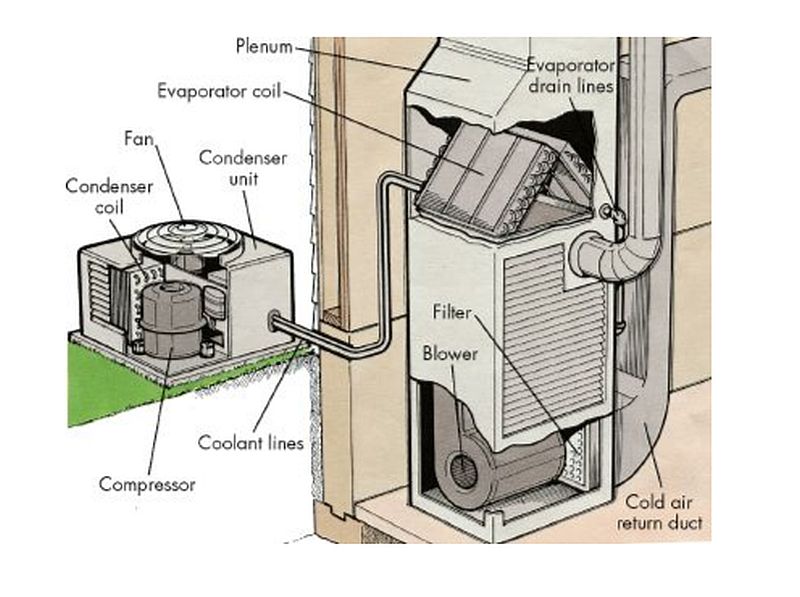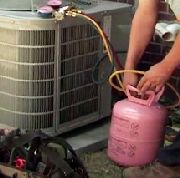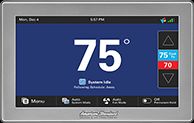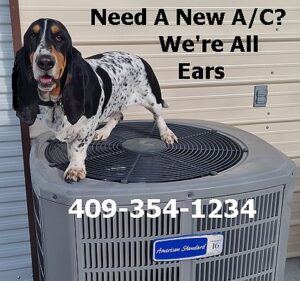 The How Does A Central Air Conditioner Work Diagram illustrates how a home central air conditioning system is made of approximately 12 major components. The two major items are the air handler located inside your home and usually found in the attic and the condensing unit which is located outside of your home.
The How Does A Central Air Conditioner Work Diagram illustrates how a home central air conditioning system is made of approximately 12 major components. The two major items are the air handler located inside your home and usually found in the attic and the condensing unit which is located outside of your home.
Need Service Now? Schedule your Summer Checkup. Call John at 409-354-1234.
- Window Air Conditioners. These used to be a very common choice for controlling the temperature in a small room which is not used as often as they used to be. However, they were the original home air conditioning system.
- Ducted Air Conditioning systems are the most common type of air conditioning system. They are efficient, quiet, and have a long life expectancy.
- Portable Air Conditioners are used in small enclosures and mostly as a temporary solution
- Wall Hung Split or Multi Head Split Air Conditioners are used in many offices and small homes & home additions where efficiency and space are at a premium.
- Air Conditioners for a Diverse Range of Situations. This type of AC system is usually a custom solution used for commercial and small biz applications.
How Central Air Conditioning Systems Work Step-By-Step
AirVantage is an American Standard dealer and a lot of our customers are curious and ask how air conditioning systems work. In the most general terms, Air conditioner systems handle cooling for your home on hot, high-temperature days this way: Air conditioners use refrigeration to chill indoor air, taking advantage of a remarkable physical law: When a liquid converts to a gas (in a process called phase conversion), it absorbs heat. Your air conditioner system (the condenser shown above) takes advantage of this feature by forcing special chemical compounds to evaporate and condense over and over again in a closed system of coils.

The compounds involved are refrigerants that have properties enabling them to change at relatively low temperatures. Air conditioners (the Air Handler component) contain fans that move warm interior air over these cold, refrigerant-filled coils (see evaporator coils above.) Central air conditioners have a whole system of ducts designed to funnel air to and from these serpentine, air-chilling coils.
When hot air flows over the cold, low-pressure evaporator coils, the refrigerant inside absorbs heat as it changes from a liquid to a gaseous state. To keep cooling efficiently, the air conditioner has to convert the refrigerant gas back to a liquid again. To do that, a compressor (inside the condenser unit) puts the gas under high pressure, a process that creates unwanted heat. All the extra heat created by compressing the gas is then evacuated to the outdoors with the help of a second set of coils called condenser coils, and a second fan. As the gas cools, it changes back to a liquid, and the process starts all over again. It’s an endless cycle: liquid refrigerant, phase conversion to a gas/ heat absorption, compression and phase transition back to a liquid again.
 One component not pictured above is your AC system thermostat. How does your thermostat work with your air conditioning system to deliver cool air on demand? The main job of your A/C thermostat is controlling when your heating or air conditioning runs.
One component not pictured above is your AC system thermostat. How does your thermostat work with your air conditioning system to deliver cool air on demand? The main job of your A/C thermostat is controlling when your heating or air conditioning runs.
The thermostat displays the current temperature and allows you to set the temperature that you want. Then the unit will adjust the current temperature by cooling or heating the air.
If you refer back to the How Air Conditioning Systems Work Diagram above… you’ll find it much easier to understand the components and how they all work to keep your home cool.
 Air Vantage Air Conditioning & Heating Services is a respected local company serving the League City, Clear Lake, Webster communities, and other neighborhoods along the I-45 So corridor. We have fully stocked service vehicles that offer fast ac repairs and checkups. Have a question about your air conditioning system? Call John today… 409-354-1234
Air Vantage Air Conditioning & Heating Services is a respected local company serving the League City, Clear Lake, Webster communities, and other neighborhoods along the I-45 So corridor. We have fully stocked service vehicles that offer fast ac repairs and checkups. Have a question about your air conditioning system? Call John today… 409-354-1234



